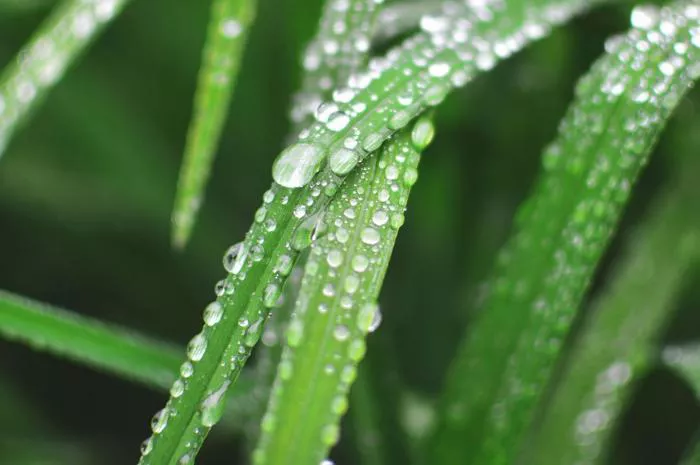The jade plant, also known as Crassula ovata, is a popular succulent loved for its glossy, fleshy leaves and resilience. While this plant is generally low-maintenance, the rainy season can pose unique challenges to its care. Excess moisture can lead to problems like root rot, fungal infections, or stunted growth. Proper care during this season is essential to keep your jade plant thriving.
This article explores effective strategies for jade plant care during the rainy season, ensuring that your plant remains healthy and vibrant.
Understanding the Impact of the Rainy Season
During the rainy season, the increased humidity and moisture can benefit or harm jade plants. While the natural humidity levels mimic their native habitat, prolonged exposure to waterlogged soil can cause damage. Jade plants prefer dry conditions, and their roots are not adapted to handle excessive water.
Recognizing the potential issues caused by heavy rains helps in implementing the right care practices. Some common problems include:
Root Rot: Excessive water leads to suffocation of roots and fungal growth.
Pest Infestations: Damp conditions attract pests like fungus gnats.
Yellowing Leaves: Overwatered jade plants may show signs of stress, including leaf discoloration.
Choosing the Right Location
One of the easiest ways to protect your jade plant in the rainy season is to select an appropriate location. While jade plants enjoy bright light, they need to be shielded from direct rainfall.
Indoors: Place your plant near a window that receives plenty of indirect sunlight. Avoid damp, dark corners.
Outdoors: If you keep your jade plant outside, move it to a covered area, such as a porch or balcony, where it can stay dry yet receive light.
Ensure there is good air circulation around the plant to prevent moisture from settling on its leaves.
Adjusting Watering Practices
Watering jade plants during the rainy season requires extra caution. Since the soil retains moisture for longer periods, overwatering becomes a significant risk.
Frequency: Reduce the watering frequency. Check the top inch of the soil; water only when it feels completely dry.
Method: Use a watering can with a narrow spout to avoid splashing water onto the leaves, as excess moisture on the foliage can lead to fungal issues.
Keeping a balance between hydration and dryness is key to maintaining healthy roots.
Improving Drainage
Good drainage is crucial for preventing waterlogging. Jade plants are susceptible to root rot if their roots sit in soggy soil for extended periods.
Pot Selection: Use pots with drainage holes to allow excess water to escape. Clay or terracotta pots are ideal as they absorb extra moisture.
Soil Type: Opt for a well-draining succulent mix. You can improve regular soil by adding sand, perlite, or small pebbles.
Regularly check the pot’s drainage holes to ensure they are not blocked by compacted soil or debris.
Pruning and Maintenance
During the rainy season, regular maintenance can prevent problems from escalating. Pruning not only shapes your jade plant but also removes parts that might harbor diseases.
Inspect for Damage: Look for yellowing, mushy, or drooping leaves and remove them promptly.
Trim Overgrowth: Prune any overcrowded areas to enhance air circulation.
Keep the plant clean by gently wiping its leaves with a dry cloth to remove dust and excess moisture.
Protecting Against Pests and Diseases
Rainy weather often brings an increased risk of pests and diseases. Fungus gnats, mealybugs, and powdery mildew are common issues during this season.
Pest Prevention: Check the plant regularly for signs of infestation. Use neem oil or insecticidal soap to address pest problems.
Disease Management: If you notice white spots or mold on the leaves, treat the plant with a fungicide. Avoid overwatering, as this exacerbates fungal issues.
Taking quick action at the first sign of trouble prevents the spread of pests or diseases.
Fertilizing During the Rainy Season
Jade plants typically don’t require much fertilizer, but if you wish to encourage growth, you can feed them lightly during the rainy season.
Type of Fertilizer: Use a balanced, water-soluble fertilizer diluted to half its strength.
Frequency: Apply fertilizer once a month during the growing season, but skip it if the plant looks stressed or waterlogged.
Avoid over-fertilizing, as excessive nutrients can harm the plant’s roots.
Repotting and Transplanting
The rainy season is not the ideal time for repotting jade plants due to the high moisture levels. However, if the plant is severely waterlogged or suffering from root rot, repotting might be necessary.
Repotting Steps: Remove the plant from its current pot, gently clean the roots, and cut away any damaged parts. Repot it in fresh, dry succulent soil.
Aftercare: Allow the plant to settle in its new pot without watering for a few days to prevent stress.
Managing Indoor Humidity
While jade plants enjoy some humidity, excessive levels can lead to problems. If you’re keeping the plant indoors during the rainy season, ensure the environment is not too damp.
Dehumidifiers: Use a dehumidifier in the room if humidity levels are consistently high.
Ventilation: Open windows and use fans to maintain air circulation.
Balancing humidity ensures the plant thrives without becoming a breeding ground for pests or fungi.
Conclusion
Jade plants are hardy and adaptable, but the rainy season requires special attention to protect them from excess moisture. By adjusting watering routines, improving drainage, and staying vigilant against pests and diseases, you can keep your jade plant healthy throughout this season.
With the right care, your jade plant will not only survive but also continue to enhance your living space with its beauty and positive energy. Following these tips ensures your plant thrives, rain or shine.
Related topics:


